PLEASE NOTE: The information in this blog is for educational purposes only. It is not a substitute for professional medical advice. Consult your healthcare provider if you’re seeking medical advice, diagnoses, or treatment.
It’s no secret that our modern food landscape has changed dramatically in the past 100-150 years. One of the most popular yet controversial dietary changes is the emergence of seed oils.
The history of seed oils is more interesting than you would imagine and is littered with connections between scientists, governments, and major corporations.
This article will cover topics like:
- What are seed oils, and why are they so popular?
- The most popular sources of seed oils
- Dangers of seed oil consumption
- How to remove seed oils from your diet
Let’s dive into it!
What are Seed Oils?
Until the late 1800s, people primarily consumed traditional fats like tallow, butter, lard, or even coconut oil (x).
Today, these traditional fats have rapidly been replaced by industrial seed oils. Seed oils are a type of vegetable oil derived from the seeds of crops.
Popular seed oils include soybean, cottonseed, canola, corn, sunflower, safflower, peanut, rice bran, and grapeseed.
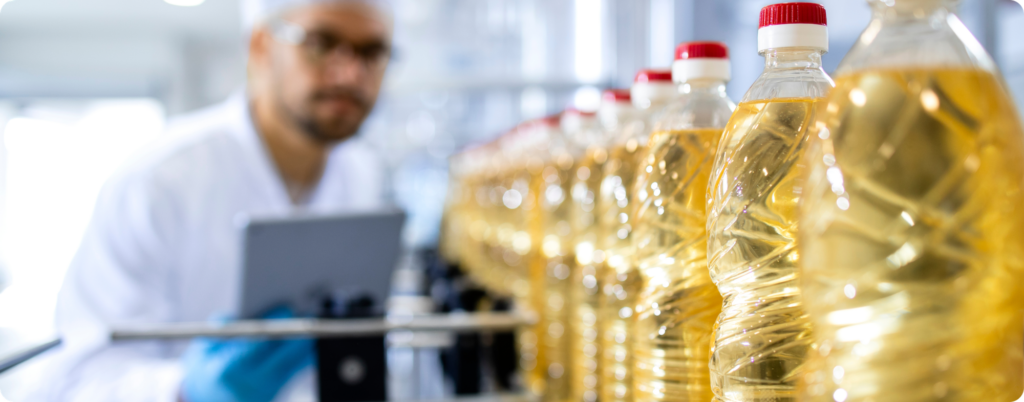
Seed oils undergo rigorous processing using bleach and intense heat before they reach your local grocery store (x). This refinement process can strip the oils of essential nutrients (such as antioxidants) and potentially create undesirable compounds, such as trans-fatty acids.
Seed oils contain high levels of linoleic acid, an omega-6 fatty acid (x). Linoleic acid is the primary polyunsaturated fatty acid (PUFA) in the Western diet (x).
Linoleic acid is not inherently bad. Modest amounts are found in meat, eggs, nuts, seeds, and vegetables. So, what’s the issue if seed oils contain linoleic acid? “Aren’t vegetables and seeds supposed to be healthy?”
The issue with seed oils is that the average person is now consuming far more than their ancestors would’ve, and the sharp increase in linoleic acid is primarily from seed oil intake (x). To add insult to injury, omega-3 intake (as found in foods like seafood and meat) is lacking in the typical Western diet (x).
It’s estimated that the omega-6 to omega-3 intake ratio was 4:1 or less until around 100 years ago (x). Nowadays, estimates for this same ratio are 20:1 (x), 30:1 (x), or even 50:1 (x)!
A high omega-6 to omega-3 ratio may contribute to the development of autoimmune diseases, cancer, obesity, cardiovascular disease, and numerous other challenges that are all too common (x, x).
Despite this potential connection to chronic disease, seed oils have continued to gain popularity across the globe:
- Soybean oil intake went from an estimated 0.006% of energy in 1909 to 7.38% in 1999 (over a 1000% increase!)(x).
- By 2050, worldwide demand for vegetable oils is slated to grow by 46% (x).
- As of 2005, an estimated 86% of added fats came from seed oils, and over 200 million tons are consumed yearly (x).
- The market for vegetable oils in 2021 was over 166 billion dollars (x).
As you’ll learn, these dramatic changes are driven mainly by corporations and organizations such as the American Heart Association.
The History of Seed Oils: How Did Seed Oils Become So Popular?
The history of seed oils begins with cottonseed oil, a waste product of the cotton industry used by Procter & Gamble as an alternative to animal fats.
As Popular Science (magazine) put it: “What was garbage in 1860 was fertilizer in 1870, cattle feed in 1880, and table food and many things else in 1890.”

In 1911, Procter & Gamble officially introduced Crisco, made with cottonseed oil as a “pure” alternative to butter (x).
The following year, the first heart attack in the US was reported. Then, in the 1920s, heart disease reared its ugly head, leading to the founding of the American Heart Association (AHA) (x). The AHA later received $1.7 million (over $21 million in today’s dollars) from Procter & Gamble (x).
Then, in the 1950s, the “diet-heart hypothesis” emerged, claiming that choosing linoleic-acid-rich oils would reduce all-cause mortality and coronary heart disease (x). Concerns about animal foods and cholesterol have caused many to look for alternatives; even McDonald’s once prepared fries with tallow and lard before switching to seed oils (x).
Despite limited evidence, the American Heart Association recommended reducing saturated fat intake (x). Governments worldwide and the World Health Organization (WHO) swiftly adopted this guidance.
The 20th century also saw a shift away from family-owned farms towards industrial operations (x). Many crops used for seed oils (like corn, soy, and cotton) began to receive massive government subsidies (x).
As soybean oil exemplifies, the resulting oils are cheap, widely available, and used flexibly in cooking applications (x).
The estimated global production of oil crops in 2020 was $335 billion, occupying around 19% of cropped land (x, x).
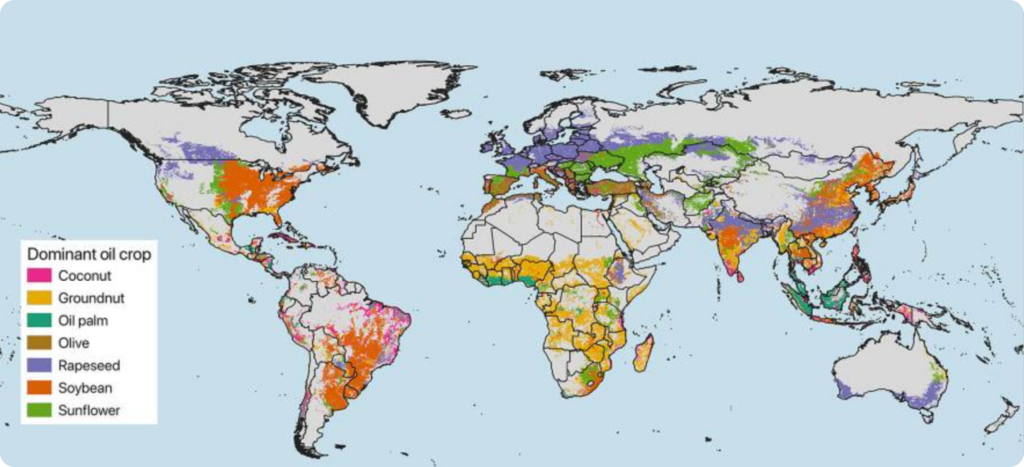
Today, seed oils and other linoleic acid-rich food options are found in supermarkets, restaurants, animal feed, and even personal care products!
Common Sources: Where Are Seed Oils Found?
You or your loved ones may be consuming seed oils daily and not even realize it. In fact, it’s estimated that Americans consume 40 grams of seed oil daily (x). Seed oils are found in common foods like:
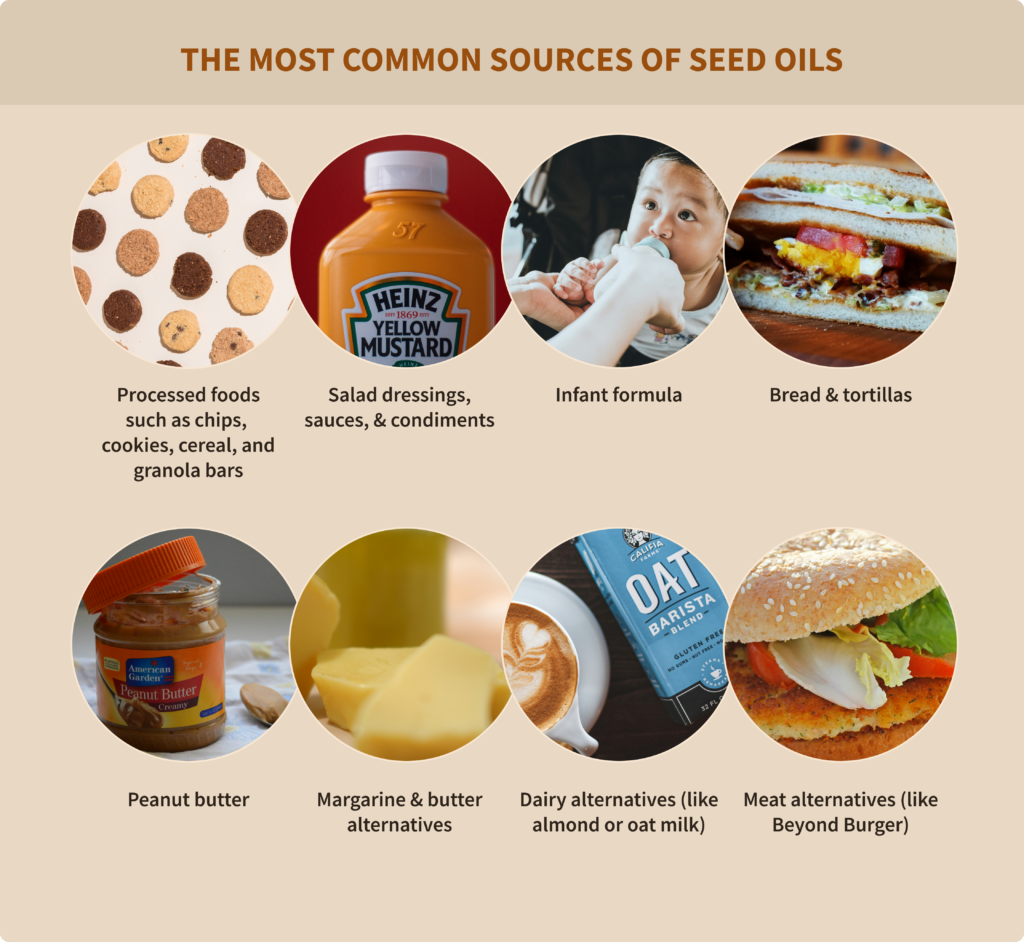
As you can see, seed oils find their way into just about everything nowadays!
Your Chiptole bowl was made with rice bran oil, and even bags of almonds are often coated with canola and sunflower oil.
One survey found that Americans consume 38% of their polyunsaturated fatty acids (PUFA) away from home (x). Therefore, it shouldn’t be surprising that most restaurants use seed oils for their menu items (x).
You have to be very diligent when reading ingredient labels and dining out. Animal’s feed are even subject to the excess linoleic acid from seed oils!
What About Linoleic Acid In Animals?
Humans aren’t the only ones who recently underwent a major dietary shift.
Livestock and poultry moved from a diet rich in omega-3s towards one with a high omega-6 intake (x). Instead of being raised on pasture and foraging, these animals are now commonly fed corn, soy, and other unnatural inputs.
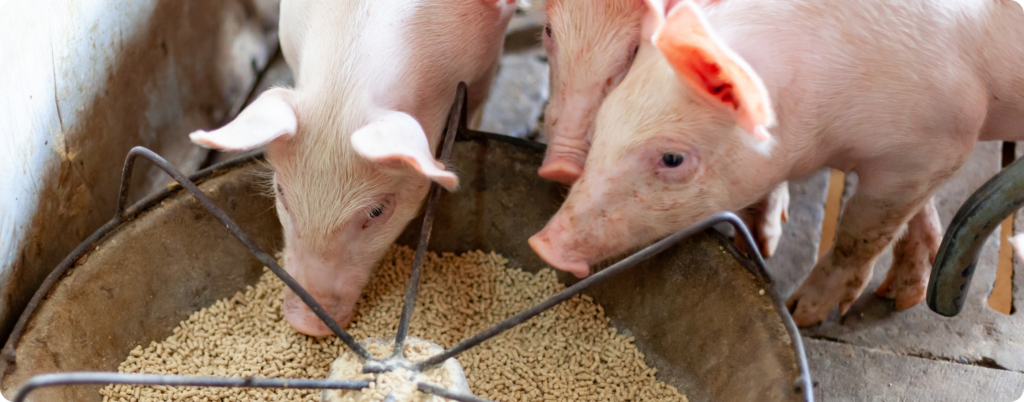
Monogastric animals like pigs, chickens, turkeys, and ducks only have one stomach where digestion occurs. Therefore—like humans— they cannot convert excess PUFAs into healthy saturated fats. Linoleic acid, found in large amounts in seed oils, can accumulate in monogastric animals.
It’s estimated that chickens or pigs fed corn and soy contain over 25% linoleic acid, even if their feed is organic (x). This is a higher percentage of linoleic acid than canola oil, a popular seed oil.
An analysis of supermarket eggs showed that the omega-6/omega-3 ratio was 9:1 instead of the suggested 2:1 (x). This is one of the reasons we suggest consuming corn-and-soy-free eggs.
On the other hand, ruminant animals like cows, deer, lamb, buffalo, and goats have
four stomachs and unique microbes that give them the ability to convert PUFAs into healthy saturated fats (x). Ruminant animals only keep about 2% of PUFAs in their fat.
If you’re looking to monitor your intake of linoleic acid, it’s ideal to focus on meat and organs from grass-fed, grass-finished ruminant animals like cattle, bison, elk, deer, or lamb.
Dangers of Seed Oil Consumption
Seed oils have various dangers outlined in a previous article, but here’s a quick summary.
Since the agricultural revolution 10,000 years ago, human genes have changed about 0.005% (x). Yet, our modern Western diet would’ve been largely unrecognizable back then. One of the most dramatic dietary changes is the consumption of omega-6 PUFAs from seed oils.
A high omega-6 to omega-3 ratio, or excessive intake of omega-6 PUFAs, has been shown to promote the development of cardiovascular disease, autoimmune diseases, and cancer (x, x). Seed oils like soybean oil are garnering attention as a key contributor to the global obesity epidemic (x).
Linoleic acid (found in high amounts in seed oils) is vulnerable to pressure, heat, and oxygen damage. It can convert into harmful metabolites called OXLAMs or OXAAMs, which can damage stem cells, DNA, and mitochondria (x, x).
OXLAMs are thought to play a central role in atherosclerosis (plaque buildup within the arteries) (x).
The main idea for incorporating seed oils in the first place was to reduce the risk of cardiovascular disease.
However, clinical trials currently do not show that replacing saturated fatty acids with omega-6 (without a rise in omega-3 PUFAs) lowers the risk of death or cardiovascular disease (x).
As of 2023, over 90% of corn, cotton, and soybeans grown in the United States are genetically modified (x). Genetically modified foods are a fairly recent addition to the human diet, and little is understood about their long-term effects (x).
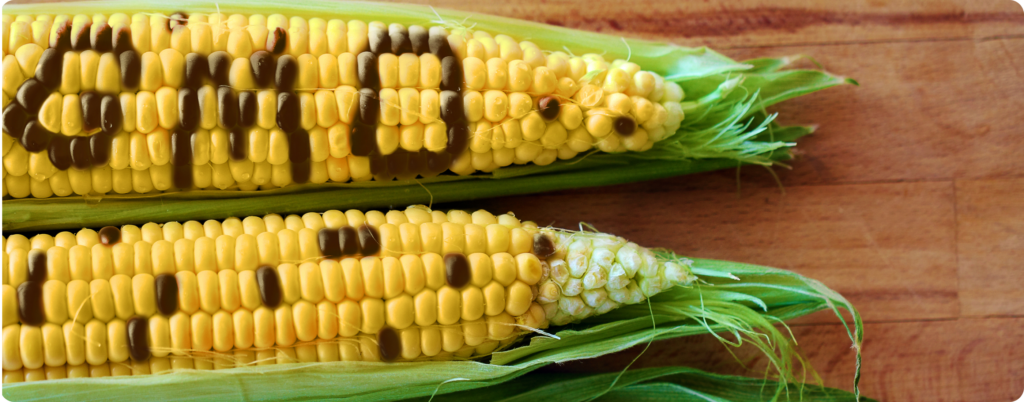
Contaminants such as pesticides, dioxins, and mycotoxins can be present during production and refinement and end up in the finished product (x, x). Food contaminated by mycotoxins can lead to reproductive disorders and oxidative stress (x).
While humans need modest amounts of linoleic acid for proper health, the excessive amounts found in seed oils make them a prime suspect in the exponential rise of chronic disease worldwide.
The Environmental Impact of Seed Oils
Beef production is heavily criticized for its environmental impact. While this is warranted in some instances, we promote regenerative agriculture practices that can sequester carbon and lead to thriving ecosystems.
Given their social and environmental impacts, vegetable and seed oils have also been controversial (x) due to their negative impact on the environment.
Oil crops account for roughly 23% of global cropland, and vegetable oil production and cultivation are a major source of greenhouse gas emissions (x).
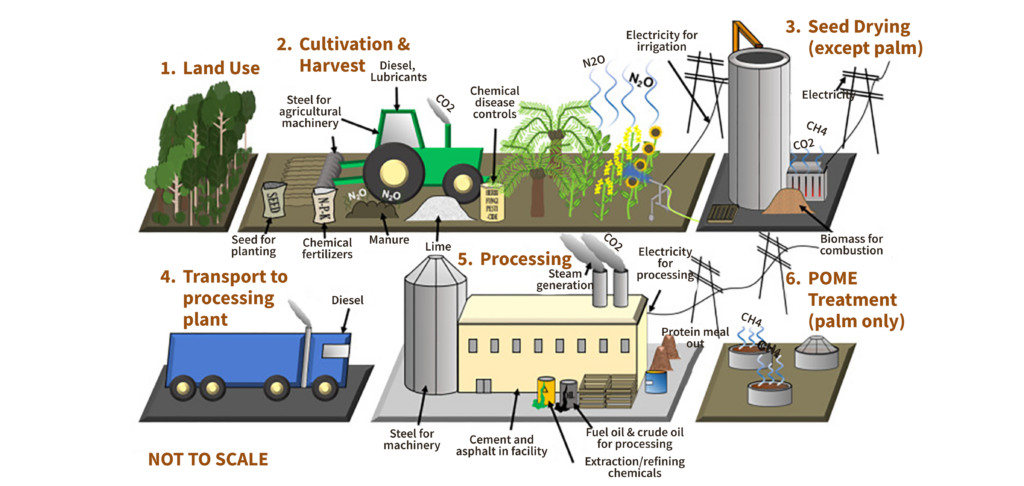
Jeff Nobbs wrote an informative article on the environmental impact of vegetable oils. His data showed that more land is devoted to seed oil crops than legumes, fruits, vegetables, roots, and tubers combined (x)!
He also found that 2 of the top 3 crops driving global deforestation are vegetable oil crops.
The Best Alternatives to Seed Oils
The typical Western diet used to include fat sources from tallow, butter, suet, lard, and palm or coconut oil in some Eastern societies (x).
We suggest prioritizing fats from animals that are low in linoleic acid. This includes grass-fed butter, ghee, tallow, and suet.
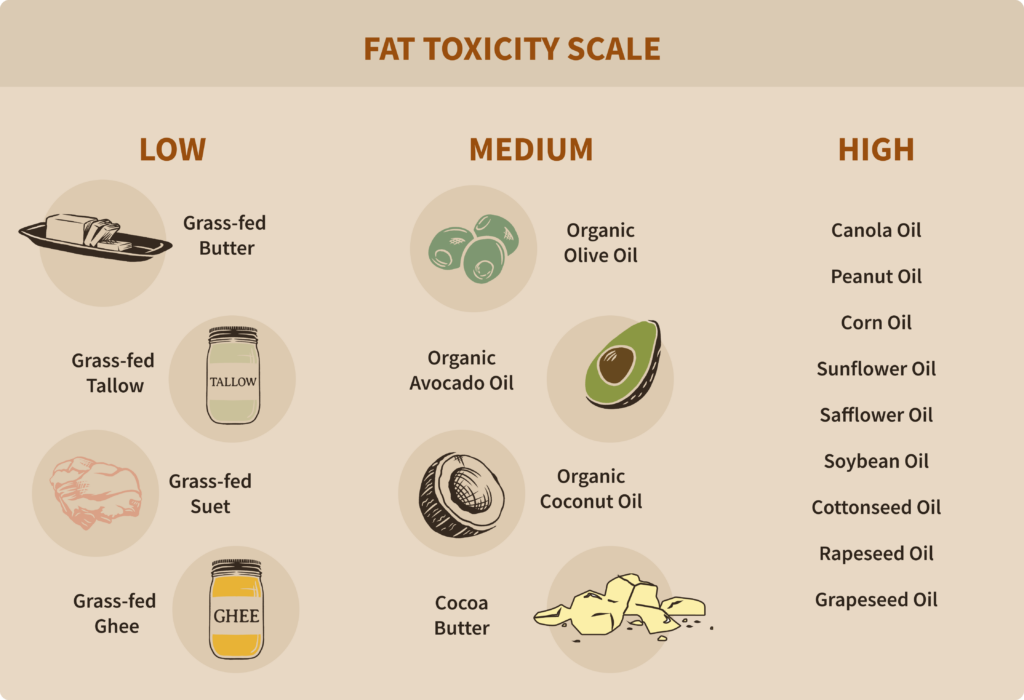
Are Olive and Avocado Oil healthy?
Unlike other vegetable oils that undergo rigorous processing before reaching the local grocery store, olive oil is essentially a fruit juice produced without chemical solvents. It has been consumed for centuries (x) and is safe to consume. However, it’s commonly mixed with seed oils, so make sure your olive oil is pure and unadulterated.
Avocado oil boasts antioxidants and other nutrients, making it a popular modern cooking oil (x). Unfortunately, the avocado oil market is ripe with misleading offerings, and consumers have no fraud protection (x). Similar to olive oil, make sure the avocado oil you purchase is pure and unadulterated.
So, you must read labels carefully when buying seed oil alternatives like olive or avocado oil.
5 Steps to Avoid Seed Oils
Ditching seed oils doesn’t have to be complicated. With a few easy adjustments, you can drastically reduce your intake of linoleic acid.
1. Read Ingredient Labels Carefully
When examining ingredient labels, take your time and try to stick with whole foods where the ingredients are self-explanatory. For example, a package of ground beef should list one ingredient: beef.
2. Cook With Traditional Fats
To avoid seed oils, opt for traditional fats low in linoleic acid, such as grass-fed butter, tallow, coconut oil, or ghee. If you buy avocado or olive oil, read the bottle carefully to ensure it isn’t mixed with seed oils.
3. Cook Your Meals
As we learned earlier, almost 40% of the typical American’s PUFA intake comes from outside the home. So, if you want to have as much control as possible over the ingredients in your meals, do your best to cook your own meals.

If you like to dine out with friends or family, use tools like Local Fats and Seed Oil Scout to find seed-oil-free restaurants!
4. Be Cautious with Pork and Chicken
If you do choose to eat chicken, pork, duck, or turkey, avoid the animals raised on conventional modern diets rich in corn, soy, millet, sunflower meal, or other high-PUFA grains and seeds.
Low-PUFA pork or chicken can be found in Firebrand Meats, Apsey Farms, or Nose to Tail. You may even be able to find high-quality options from a local farmer!
5. Eliminate Processed Foods From Your Diet
Seed oils are found in just about every fast-food restaurant or processed food item. Examine the label of cookies, breads, cereals, or chips, and you’re almost guaranteed to see at least one seed oil listed.
While they may taste delicious, it’s best to eliminate ultra-processed foods from your diet.
The Bottom Line: Avoid Seed Oils at All Costs
Seed oils have exploded in popularity recently due to their versatility and low cost. Although they’ve found their way into all corners of the food supply, evidence is emerging that high intake of seed oils can be problematic.
Thankfully, simple changes can significantly reduce your exposure to these oils.
Resources to Learn More
- Podcast: How Seed Oils Destroy Your Mitochondria and Lead to Chronic Disease, with Tucker Goodrich
- Book: The Ancestral Diet Revolution: How Vegetable Oils and Processed Foods Destroy Our Health – and How to Recover!
- Blog Series: What’s Driving Chronic Disease?
- Podcast: Seed Oils vs. Saturated Fat
- Lecture: Nina Teicholz – ‘Vegetable Oils: The Unknown Story’
Subscribe to future articles like this: